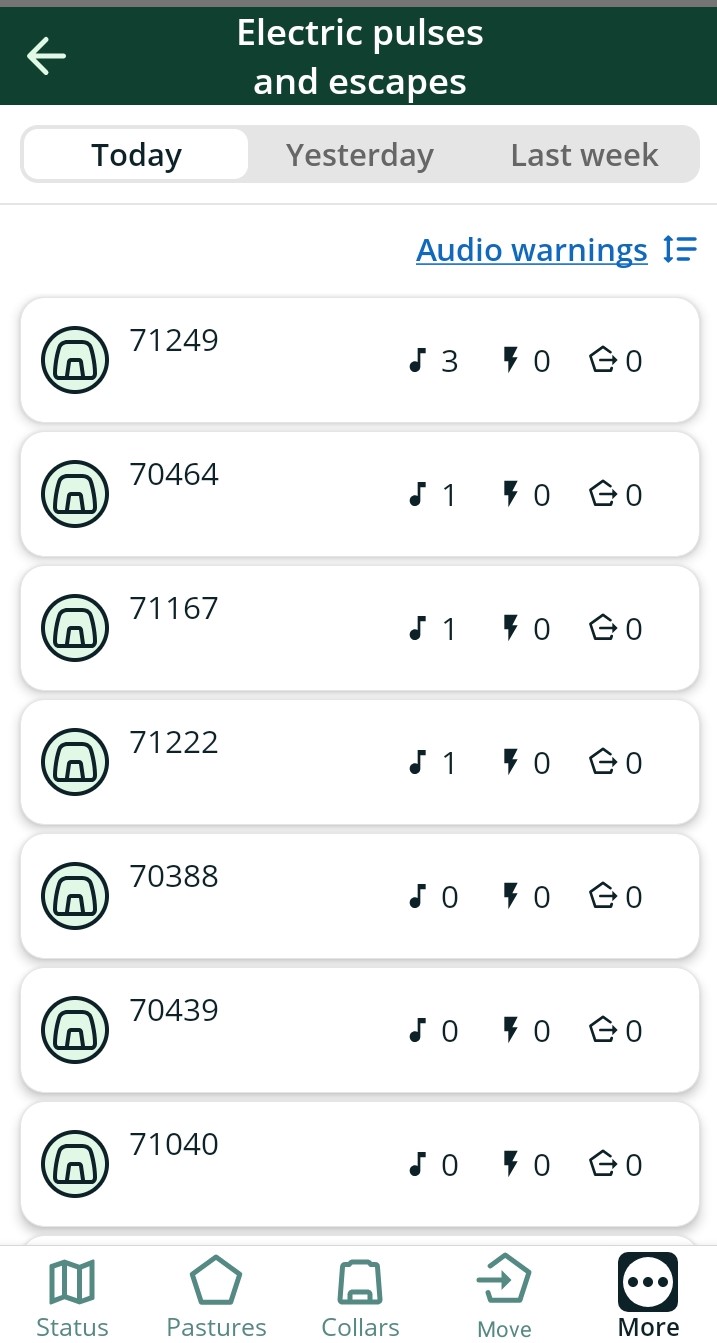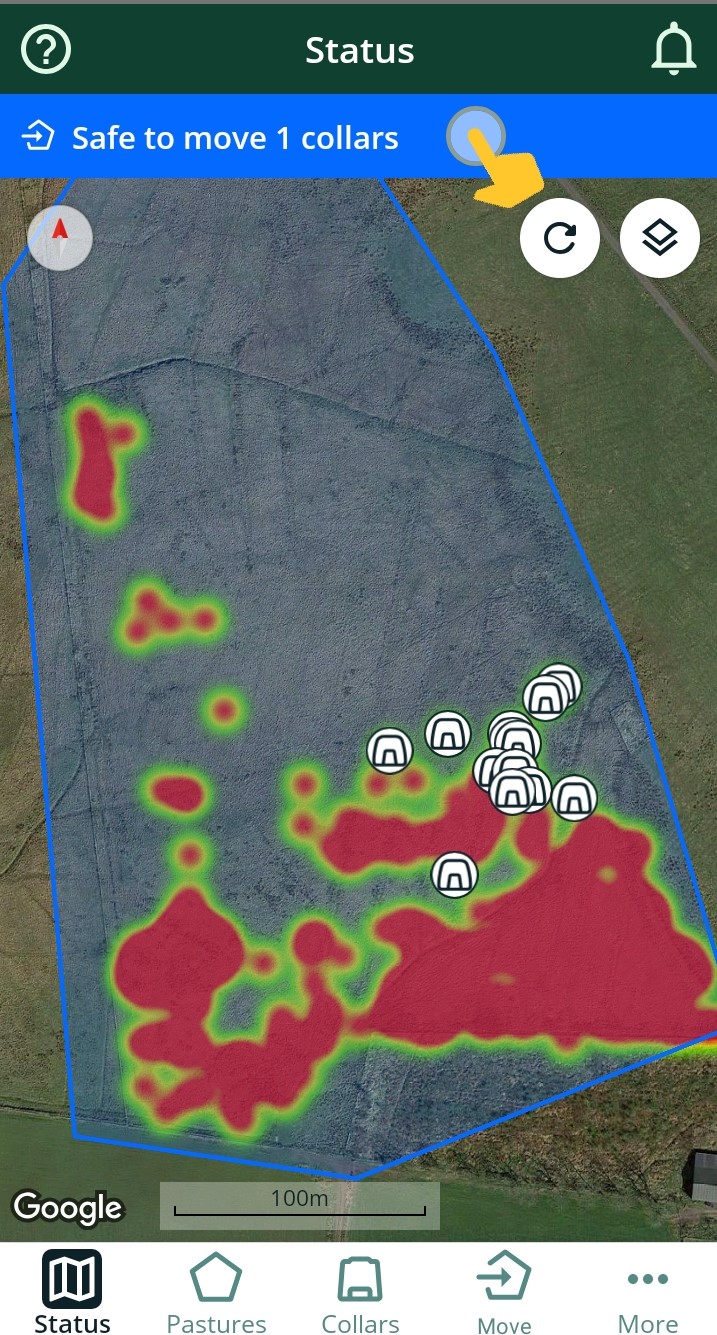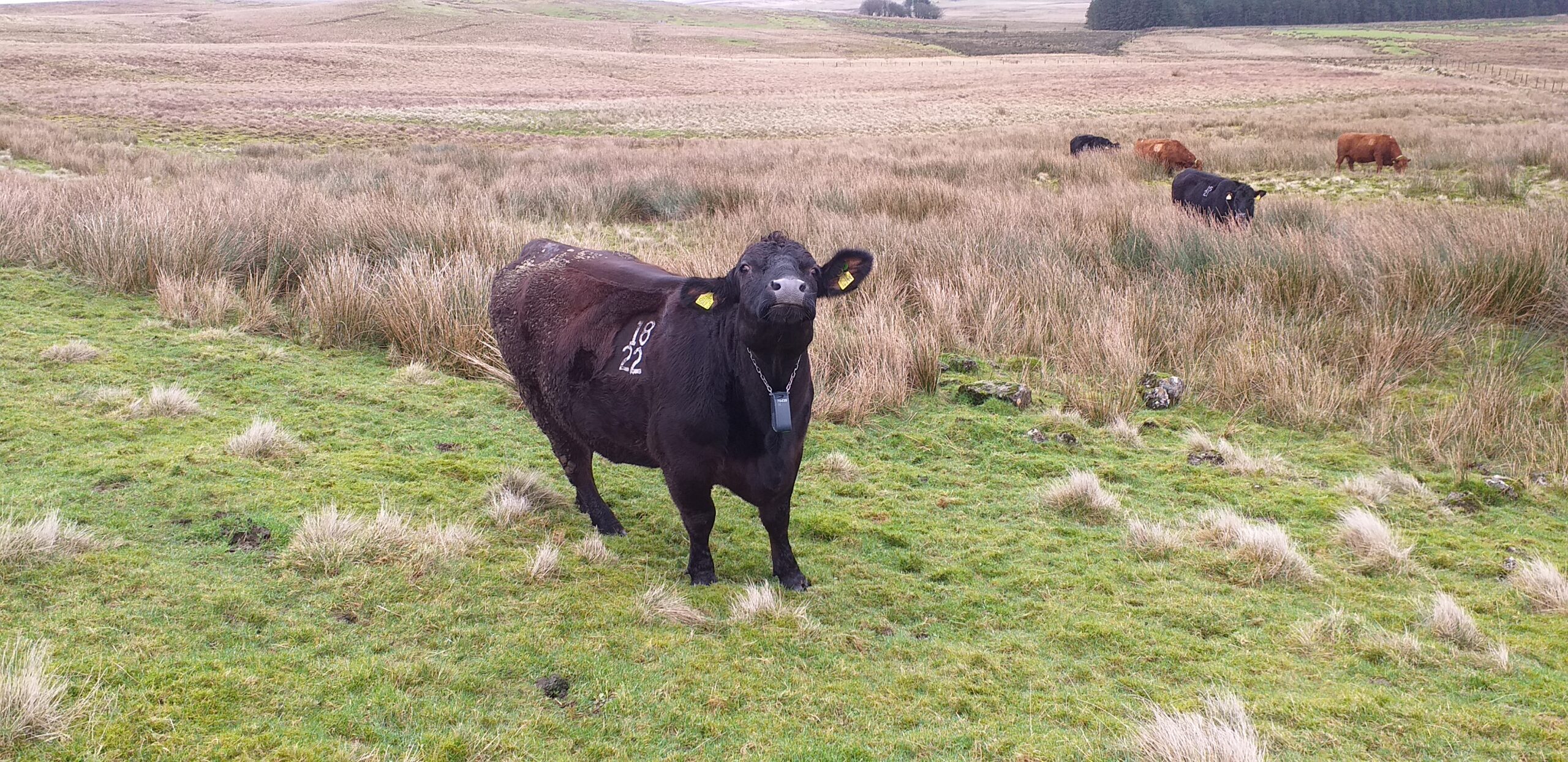Virtual fencing to assist conservation grazing
Commencing in January 2022 CAFRE Hill Farm has been exploring the use of a virtual fencing system with portions of the suckler herd involved in an out-wintering project for pasture management for a breeding wader site. From June 2022 a group of 30 suckler cows and a flock of blackface hoggets will also be run with the virtual fencing system to investigate how such a system can maximise the use of grazing animals to create and maintain valuable upland habitats.
Background
In large blocks of NI unimproved land, grazing of agricultural livestock is the main land use and form of vegetation control. These areas provide a large portion of NI priority habitats such as blanket bog, purple moorgrass and rush pasture, species rich grassland, semi-natural grassland for breeding waders, and coastal semi-natural grasslands. Maintaining these habitats in favourable condition both within designated sites and the wider landscape requires grazing management.
Description of technology
Virtual fencing is an invisible fencing system whereby a grazing animal wears a GPS collar unit which plays an audible melody and if necessary, emits an electric pulse to the neck to deter the animal from crossing a virtual boundary. A grazing area or pasture is created using a mapping app which then communicates with the collar on the animal. When the animal approaches the Nofence boundary, the collar emits the audio melody warning to deter it from crossing the line.
The signal resembles a scale of tones, starting at a low pitch and rising gradually as the animal approaches the Nofence boundary. The animal will recognise this tone scale, turn, and go back to the Nofence pasture to avoid the electric pulse.
How have the livestock responded?
When the livestock are initially fitted with the collars, they are trained in a modest rectangular field with one end closed off by virtual fence. Within one week the stock have learned the system and can then be turned onto larger land blocks and the system used to protect vulnerable areas and or restrict grazing to get less palatable zones grazed out. There is remarkable variation between individual cows in how close they graze to the virtual fence but remarkably there are very few shocks delivered as the individual and the herd responds promptly to the audio cues. The system works in one direction only so that any escapees can always rejoin the herd.
Additional benefits to the system
The system is worked from a mobile phone or other device. It gives an up to date location of each animal and provides an activity monitor which allows comparison across the herd to check for unusual behaviour as a sign of ill health.
Problem identified that the technology will address
Often areas are made up of a mosaic of different habitats which have different grazing needs such as stocking rate or time of year restrictions. Grazing as a block often leads to preferential grazing with livestock naturally focussing on some areas rather than others. This can lead to under grazing or overgrazing of some habitats. Under grazing leads to vegetation mulches, a consequent reduction of vegetation the next year and a deterioration of habitat condition. Standard post and wire fencing maybe difficult and expensive to erect and may be undesirable from a landscape and wildlife impact. Bird species such as red grouse can get caught up in the wire and posts may be used as perches by predators such as crows reducing the size of any suitable area for ground nesting species.
Under-grazed areas may require unsustainable interventions such as flailing, or burning. In previous years CAFRE has undertaken annual flailing of soft rush by track tractor in January to maintain its 70 hectare breeding wader site in favourable condition. Virtual fencing provides a tool to assist the grazing out, of undesirable areas or to allow grazing stock to be maintained in a land block away from a fragile zone where grazing is not permitted at certain times of the year.
Current / potential industry uptake
Since 1999 virtual fences have been linked with GPS technology. Considerable research and development has been ongoing in Australia funded by the development companies. There are several commercial systems available. One of these, the Nofence system has been used on commercial goats since 2018 and has approval from the Norwegian Food Safety Authority. In the UK the RSPB has been successfully using the Nofence system on 19 Luing heifers during 2020 and 2021 for a wildlife and conservation grazing project. AFBI have conducted stock welfare trials and found no evidence in 2021 of higher levels of stress versus the industry standard electric fencing system.
Conservation grazing where the focus of the activity is habitat management by hardy livestock rather agricultural production, has become a more common approach for designated sites in the UK and Ireland over the past decade. The restrictions and difficulties of managing habitat mosaics still remain an impediment to participation within agri-environment schemes, particularly in difficult sites such as Rathlin. The continuing high proportion of designated sites not making favourable condition status mean that there is potential for virtual fencing technology to play a role in conservation grazing.
Due to the systems current high cost the wider potential industry uptake is low, however it is a technology that is likely to fall in price, be funded through environmental schemes or NGO’s and be favoured in designated sites.



Supporting data sources / references / technical reports.
- AFBI preliminary data report from F. Lively
- Eftang, S & Boe, K. NMBU, Norwegian University of Life Science, Virtual Fences for Cattle – Studies on heifers 2018. Assignment on behalf of Nofence AS
- Eftang, S & Boe, K. NMBU, Norwegian University of Life Science, Virtual Fences for Sheep – Studies on ewes 2018. Assignment on behalf of Nofence AS
- RSPB, Gelstdale, Nofence invisible fencing trial
Nofence invisible fencing trial – Geltsdale – Geltsdale – The RSPB Community
